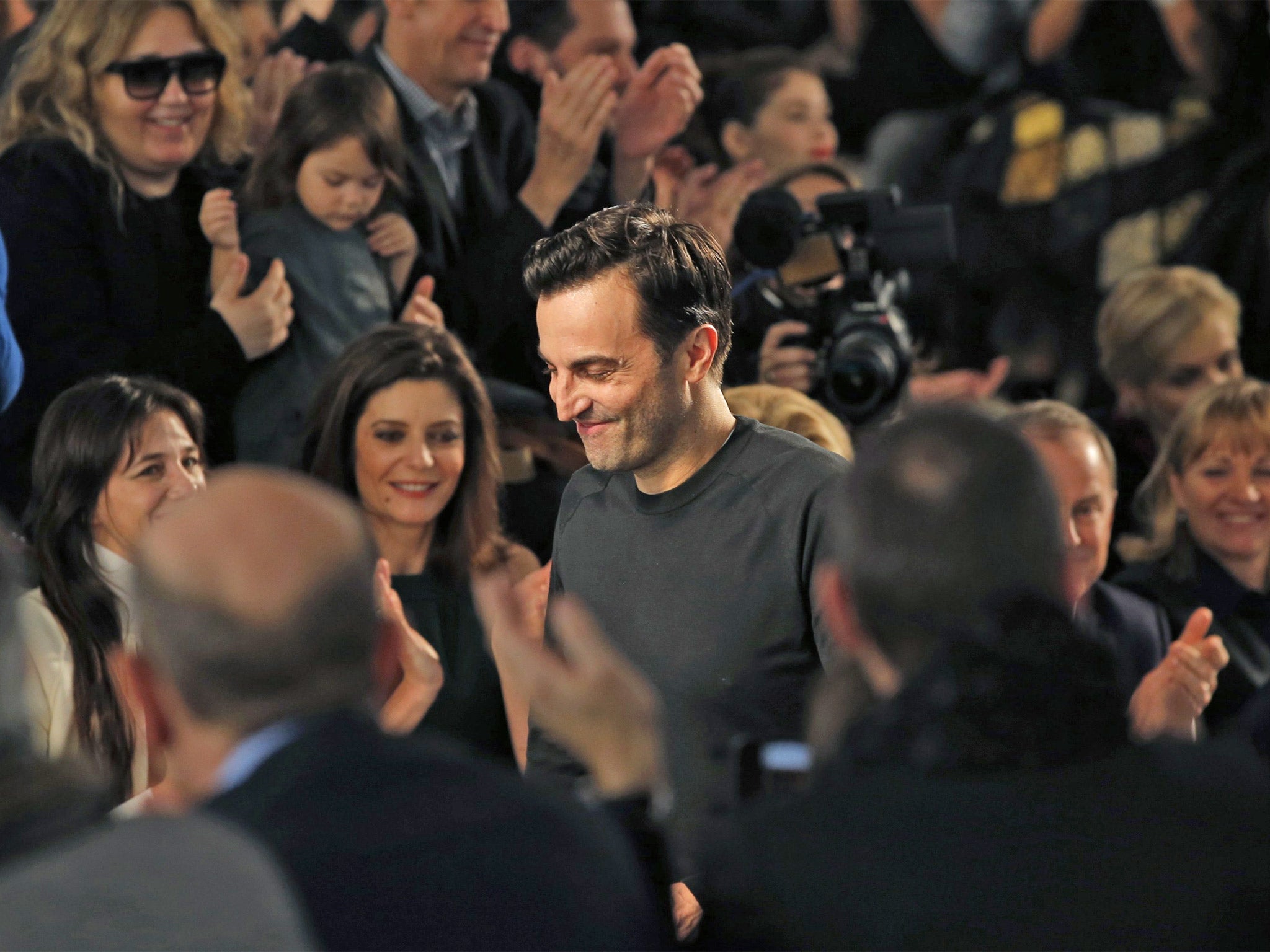Nicolas Ghesquière: The man who asked Louis Vuitton's handbag makers to have a go at dresses
Louis Vuitton’s workers helped to create a new leather look, the designer tells Alexander Fury

“Aw, come here copycat. You’re my puppet. You know I love it.” So intoned the soundtrack to Nicolas Ghesquière’s autumn/winter 2014 Louis Vuitton show, his all-important debut for the French luxury-goods behemoth in Paris.
Was it a wry dig at the backstreet bootleggers whose rip-off Vuitton bags are a multimillion-pound business in their own right? Or maybe at the rest of the fashion industry, which during his 15-year tenure at the house of Balenciaga consistently pecked over his work for plum ideas to enliven their own collections? There’s been something of a down mood this season, as if many designers were treading water. Or holding fire, waiting for Ghesquière’s next move.
He left Balenciaga in 2012, having established a contemporary template for the label (Alexander Wang is still running with it) and for himself as a designer. Fabric innovation, archival investigation and a touch of the sci-fi, the whole resulting in a retro-futuristic mix that vibrated, each season, with invention and energy... His first Vuitton show seemed to pick up where he left off chez Balenciaga, albeit on a different scale.
Backstage, Ghesquière talked the fashionable patter about Vuitton’s heritage and codes, but it was the new that he brought to the house that remained in the memory.
Inspirations? There weren’t really any. “What I tried to express was quite effortless,” explained Ghesquière, a slight and quintessentially French-looking man of 42 who seems perhaps a decade younger. “To be honest, it was a lot of work, but I wanted to approach it with an easiness. I didn’t want to do a theme or story, to be very thematic. I have this vision of Vuitton as multiple propositions. It’s definitely a wardrobe.”
There was, however, a vague 1970s inflection running through the show, from the high, stiff hemlines of zip-through A-line mini-dresses to the tightly sweatered torsos and hyper-high waisted trousers. Those bordered on the 1980s – another of Ghesquière’s favourite reference points – when worn with a wrapped, metal-embellished leather belt, while a single glistening gilt Vuitton gewgaw dangled from the models’ left earlobes.
Leather was, naturally, omnipresent, glistening on the opening thigh-high coat, later inset into skirts and dresses, spanning the waist or gleaming at the shoulder. “There is a lot of leather and a lot of metal – which obviously comes from the bags,” said Ghesquière. “I asked the leather goods atelier to develop some pieces of clothes, and that was new for them. Usually they do bags. It’s creating this transition between leather goods and ready-to-wear.”
Ready-to-wear is what Louis Vuitton offers – alongside lots and lots of bags. However, it was easy to forget that in the final few years of Marc Jacobs’ shows for the house, the clothes became increasingly archaic and fantastical to compete with the elaborate set pieces. Ghesquière seemed to be stating his point with equal force – albeit with less smoke and fewer mirrors. He’s ready to dress the world – and these eminently desirable designs should do just that.
If this Vuitton show lacked the glamour and drama of an elaborate set piece, or the jolt of some of Ghesquière’s earlier collections, where he reset our ideas of decoration and proportion, it certainly wasn’t short on experimentation.
“I ask people to do things they’re not used to doing,” said Ghesquière of the Vuitton craftspeople. “I play a little game – I ask the knitwear woman to think about fabric, and I did the same with the person who developed the fabric, to think about knit. There is a game in the collection… what is real, what is not real. But it’s subtle.”
Pushing people outside their comfort zones is a trademark of Ghesquière’s approach. Here, there was something slightly discombobulating in seeing him present ideas quietly, with such polish and commercial élan. A few, perhaps, were deflated. Look harder.
Ghesquière is clever, and his clothes are too. There’s more than immediately meets the eye, and they’re far more than just foils for bags. “Craftsmanship” and “functionality” were words he intoned again and again, as journalists descended to pick over the newest Vuitton name for sound bites.
However, one variation on that theme stood out: “It’s the human side of the craft that’s important.” The human behind Vuitton is, of course, Nicolas Ghesquière. And he is important.
Join our commenting forum
Join thought-provoking conversations, follow other Independent readers and see their replies
Comments